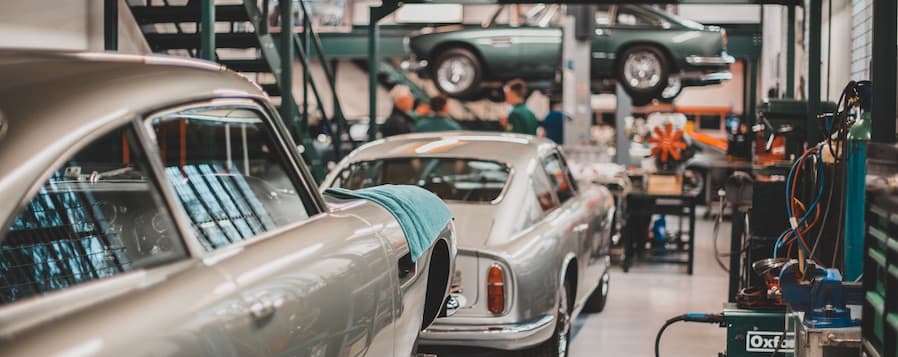As with most businesses, there are some changes in the work pace from season to season and as we get deeper into winter, we've been busy getting some very nice projects closer to completion.
In this edition, we want to concentrate on just two or three cars to illustrate the value of "the catch".
A burgundy V8 Volante came in to have some work done - with the possibility of turning into a part restoration. It's a very nice looking car that hadn't been used for a while so our task was to get it mechanically sound first. We created our usual hitlist of recommended jobs for our customer to work through and added this to his - which includes a potential project to have it repainted.
First of all though we attended to a few running issues as well as some rust that needed to be "catched" (a technical term!) before it gets any worse. It's essentially a case of some finessing to make it a nice car to drive, catch any rust and make sure it's solid where it matters before we even think about whether it does in fact need repainting. We never want an owner to be in the position where the car looks amazing - but all sorts of ugliness is going on out of sight!
The olive green car we've spoken about before is making good progress. We're now putting in things that aren't easy to get to once the engine's in - like lights and heater blowers for example. Once those have been taken care of, the front suspension gets put in so that if we need to, we can put it on its wheels and move it about. It's a slow process - but it's also a meticulous process. Each step of the way we're doing something that will stand the test of time and put a lot of wrongs right. It's everything from new parts and fittings to refurbishing items that were on the car and fundamentally okay but need a bit of restoration to get them fully operational again.

At the other end of the workshop, a DBS from the late Sixties in a silvery-blue sits waiting for us to begin working through a list consisting of items that the owner wants us to work on - and other items we've added based on a thorough look over. It's a lovely car and he's keen to get it to the point where it'll be reliable enough to take the family on holiday and go on days out. Something to be anticipated with joy - rather than a certain amount of trepidation! In this case, for example, we'll be very keen to change the tyres. At first glance, they look lovely, but they're not the tyres for the car. With a better quality of tyre, the owner might get a nicer ride - and more importantly, a safer ride. And because we've talked to him about his car, we know this will matter to him since he wants to use it as a family tourer.
This joint approach to creating a hitlist of items to be worked on is an essential way of working at Pugsley & Lewis. Having got a car to the workshop and raised it so two or three of us can have a good look around and underneath it, we make a list of things that need to be "catched". At this point we'll arrange a joint viewing - so we book the owner in for what we call an "up in the air inspection" of the vehicle.

This is definitely something that really interests and excites customers because as you can imagine most of them have probably never seen underneath their own car, and it gives us an opportunity to point out things that we think are really important like maybe the chassis needs work - rather than some more obvious things like the door not shutting straight or can we tidy up that little bit of leather there! Even if it's out of sight, it has got to be right.

When the owner comes in, we'll talk through the things we can see which aren't visible from the ground up - the things that can only be seen when you're able to get a good look at what's holding the car together. We can then give an idea of the cost to put it all right as well as advise and discuss what might be worth prioritising and what is less important. Ultimately, we're aiming to get a good M.O.T. for the vehicle and make everything strong. When you bring an owner in and talk them through what you've been looking at, it might still represent a big spend, but being able to discuss it together means there's a preparedness there and the owner can take an active part in how the work is prioritised with our help.
So, the theme for this edition of Workshop Diary is catching - catching things in time and saying, this is going to be a problem if we don't address it now. It's the only way to work!




